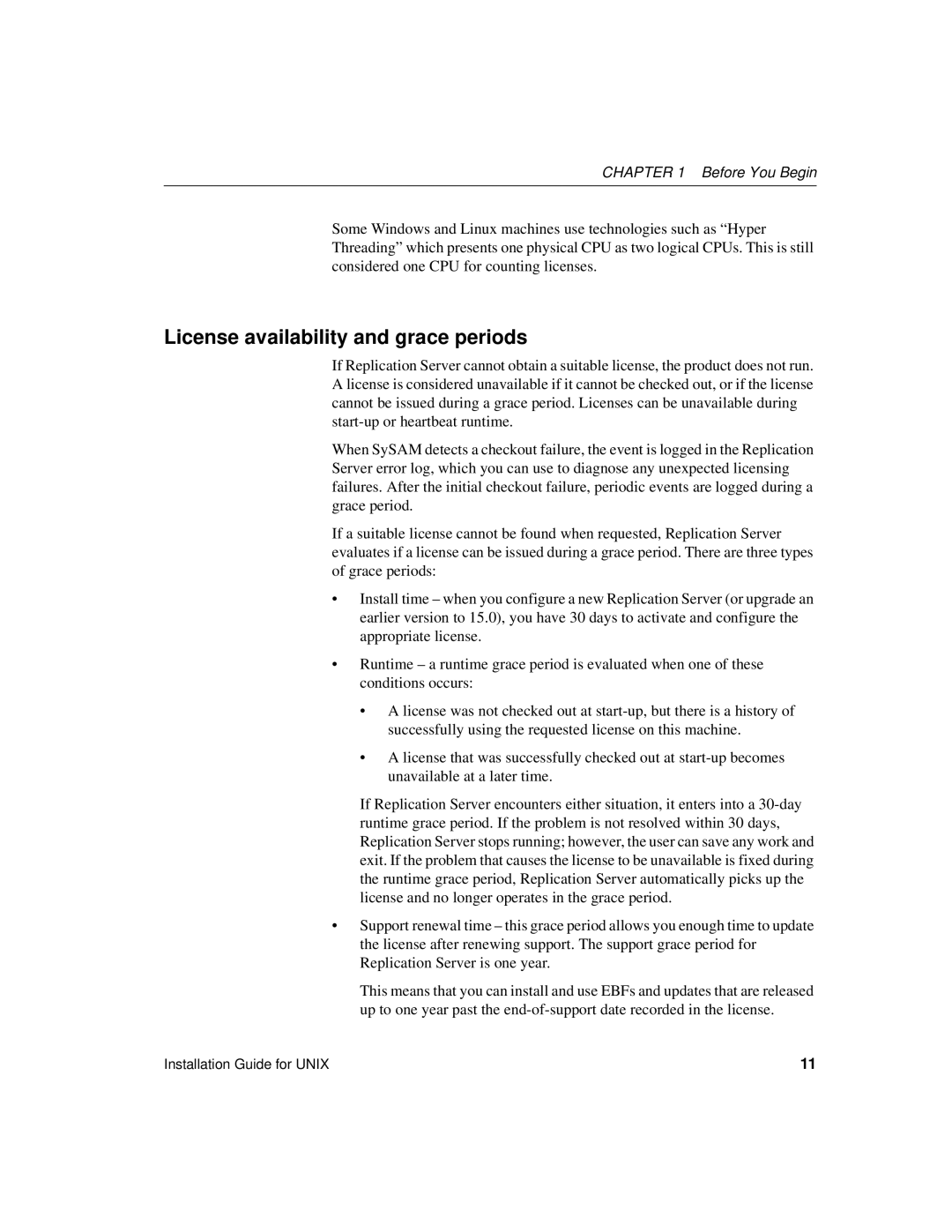CHAPTER 1 Before You Begin
Some Windows and Linux machines use technologies such as “Hyper Threading” which presents one physical CPU as two logical CPUs. This is still considered one CPU for counting licenses.
License availability and grace periods
If Replication Server cannot obtain a suitable license, the product does not run. A license is considered unavailable if it cannot be checked out, or if the license cannot be issued during a grace period. Licenses can be unavailable during
When SySAM detects a checkout failure, the event is logged in the Replication Server error log, which you can use to diagnose any unexpected licensing failures. After the initial checkout failure, periodic events are logged during a grace period.
If a suitable license cannot be found when requested, Replication Server evaluates if a license can be issued during a grace period. There are three types of grace periods:
•Install time – when you configure a new Replication Server (or upgrade an earlier version to 15.0), you have 30 days to activate and configure the appropriate license.
•Runtime – a runtime grace period is evaluated when one of these conditions occurs:
•A license was not checked out at
•A license that was successfully checked out at
If Replication Server encounters either situation, it enters into a
•Support renewal time – this grace period allows you enough time to update the license after renewing support. The support grace period for Replication Server is one year.
This means that you can install and use EBFs and updates that are released up to one year past the
Installation Guide for UNIX | 11 |
